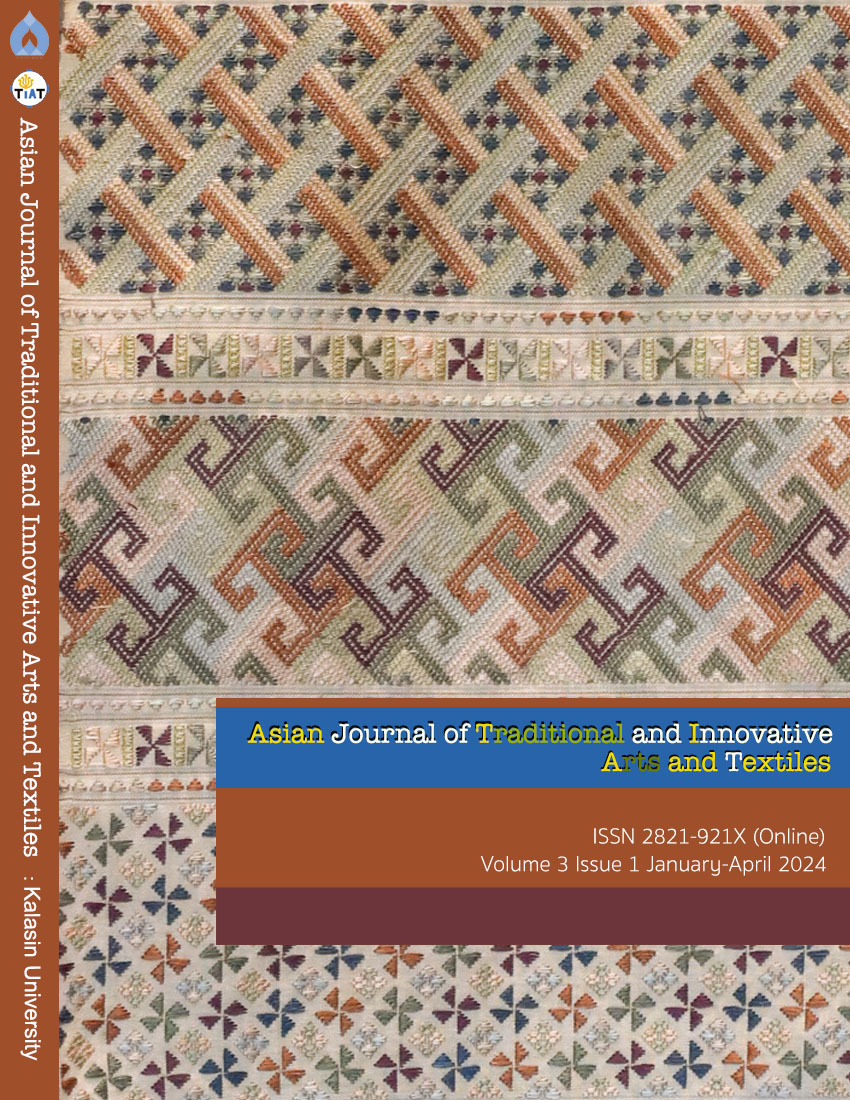Green Finance and Natural Capital in regards to Tax Assessment
DOI:
https://doi.org/10.14456/tiat.2024.3Keywords:
Natural capital, Green finance, Budget calculationAbstract
The purpose of the research is to point out the importance of Green Finance and Natural Capital and apply such concepts to the method of national budget calculation and tax assessment. This article employs the method of studying related literature, in regards to Green Finance and NaturalCapital, in conducting the research. The data has been collected secondarily and the result shall be presented in a descriptive form. The findings of this show that, first, Green Finance or Environmental Finance is a concept that is about investments that relate to the environment. The definition of Green Finance is crucial because having a clear definition would attract more investors and investments(to the Country) since the investor will be able to know what they are investing in and estimate their return on investment. Moreover, a clear definition of Green Finance will enable the Government to initiate a clear public policy that shall better protect the environment and its resources as a whole; second,Natural Capital which means capital, both biotic and abiotic, that stems from Mother Nature, is hard to calculate its valuation due to the fact that Natural Capital can be hard to see directly. However, if nature is speculated closely, it can be seen that its capital can be calculated from the amount one would need to pay if such natural resource has disappeared or the value that one is willing to pay to enjoy such natural resource, thus, allowing us to better calculate the value of Natural Capital and even reflect such value on products or other goods that human consume daily. With that said, realizing the concept of Natural Capital may enable tax assessments and national budget calculations to be more accurate in terms of reflecting the true value of such goods which could be better than assessing the value of goods and consumption based on their price at the point of sale or at the point of transaction. Therefore, Green Finance and Natural Capital can lead to creating more income for the Government by taking Natural Capital into account when assessing each type of tax, these additional income shall then be used for public affairs and services.
References
ณัฐวงศ์ พูนพล และ ชาลินี ปลูกผลงาม. (2563). การบัญชีเพื่อสังคมและสิ่งแวดล้อมสู่แรงจูงใจทางด้านภาษี. วารสารวิทยาลัยพาณิชยศาสตร์บูรพาปริทัศน์. 15(1) : 1-20.
ดุษฎี วรธรรมดุษฎี. (2563). การคลังสาธารณะสำหรับ Green New Deal ในสหราชอาณาจักร. วารสารสมาคมนักวิจัย. 25(2) : 213-232.
ธนภณ แก้วสถิตย์. (2550). คำอธิบายภาษีเงินได้ระหว่างประเทศและหลักการทั่วไปของอนุสัญญาภาษีซ้อน. กรุงเทพฯ : ชวนพิมพ์.
ธนาคารแห่งประเทศไทย. (2566). Thailand Taxonomy กติกาใหม่เพื่อโลกที่ยั่งยืน. สืบค้นเมื่อ 28 พฤศจิกายน 2566, สืบค้นจาก https://www.bot.or.th/th/financial-innovation/sustainable-finance/green/Thailand-Taxonomy.html
นคร ยิ้มศิริวัฒนะ. (2548). การคลังรัฐบาล (Public Finance). กรุงเทพฯ : สำนักพิมพ์มหาวิทยาลัยรามคำแหง.
ปราณี จิตกรณ์กิจศิลป์. (2555). ความหมายของจริยธรรมในการตลาดสีเขียว งบประมาณสีเขียว การตลาดสีเขียวและการโฆษณา. วารสารมหาวิทยาลัยคริสเตียน. 18(2) : 177-190.
ศุภลักษณ์ พินิจภูวดล. (2556). กฎหมายภาษีอากร. กรุงเทพฯ : โครงการตำราและสื่อการสอน คณะนิติศาสตร์ จุฬาลงกรณ์มหาวิทยาลัย.
สำนักงานคณะกรรมการกำกับหลักทรัพย์และตลาดหลักทรัพย์ (ก.ล.ต.) ฝ่ายตราสารหนี้. (2566). Taxonomy กับการพัฒนาการเงินเพื่อความยั่งยืน. สืบค้นเมื่อ 21 กุมภาพันธ์ 2566, สืบค้นจาก https://www.sec.or.th/TH/Template3/Articles/2566/210166.pdf
สำนักงานเศรษฐกิจการคลัง. (2566). ข่าวกระทรวงการคลังผลการจัดเก็บรายได้รัฐบาลสุทธิ (กระทรวงการคลัง, 2566) ในช่วง 11 เดือนแรกของปีงบประมาณ 2566 (ตุลาคม 2565 – สิงหาคม 2566). กรุงเทพฯ : กระทรวงการคลัง.
อัญชลี จวงจันทร์. (ม.ป.ป.). งบประมาณรายจ่ายของแผ่นดิน. สืบค้นเมื่อ 28 พฤศจิกายน 2566, สืบค้นจาก http://wiki.kpi.ac.th/index.php?title=%E0%B8%87%E0%B8%9A%E0%B8%9B%E0%B8%A3%E0%B8%B0%E0%B8%A1%E0%B8%B2%E0%B8%93%E0%B8%A3%E0%B8%B2%E0%B8%A2%E0%B8%88%E0%B9%88%E0%B8%B2%E0%B8%A2%E0%B8%82%E0%B8%AD%E0%B8%87%E0%B9%81%E0%B8%9C%E0%B9%88%E0%B8%99%E0%B8%94%E0%B8%B4%E0%B8%99
Chapman, H. H. (1920). Forest Taxation. The Bulletin of the National Tax Association. 5(4) : 109-116.
Chapman, H. H., Foster, J. H., Ayres, P. W., & Murphy, L. S. (1921). The Taxation of Forest Property [with discussion]. (1921). Proceedings of the Annual Conference on Taxation under the Auspices of the National Tax Association. 14 : 36-58.
Dasgupta, P. (2021). The Economics of Biodiversity : The Dasgupta Review. Abridged Version. UK : HM Treasury.
Dasgupta, P. (2023). Wealth and well-being. Keynote speech, Bank of Thailand. Retrieved 28 November 2023, from https://www.youtube.com/watch ?v=SSXJ-_RFpvk
Emeritus. (2023). How Does Green Finance Benefit Organizations and the World. Retrieved 5 February 2024, from https://emeritus.org/blog/finance- what-is-green-finance/
Fiscal Policy Office; Bank of Thailand ; Securities; Office of Insurance Commission; Stock Exchange of Thailand; International Finance Corporation. (2021). Sustainable Finance Initiatives for Thailand. Retrieved 28 November 2023, from https://www.sec.or.th/TH/Documents/KnowledgeBase/SustainableFinanceInitiativesforThailand.pdf
Heal, G. (2017). Endangered Economies: How the Neglect of Nature Threatens Our Prosperity. Columbia : Columbia Press.
International Development Finance Club. (2022). IDFC Green Finance Mapping Report 2022. Climate Policy Initiative.
Lovins, L. H. (2004). Natural capitalism: Path to sustainability. Natural Resources & Environment. 18(3) : 3-8.
Leruth, L., Paris, R., & Ruzicka, I. (2001). The Complier Pays Principle: The Limits of Fiscal Approaches toward Sustainable Forest. IMF Staff Papers. 48(2) : 397-423.
Natural Capital Committee. (2017). Economic valuation and its applications in natural capital management and the Government’s 25 Year Environment Plan. UK : Natural Capital Committee.
Noh, H. J. (2018). Financial strategy to accelerate green growth. ADBI Working Paper Series No. 866. Asian Development Bank Institute. Retrieved 28 November 2023, from https://www.adb.org/publications/financial-strategy-accelerate-green-growth
Statistical Bureau of Guangxi Zhuang Autonomous Region. (2019). Guidlines for the Pilot of Natural Capital Accounting and Valuation of Ecosystem Services Project (Draft). Guangzi Zhuang Autonomous Region : Statistical Bureau of Guangxi Zhuang Autonomous Region.
UN Environment Programme. (n.d.). Green Finance. Retrieved 28 November 2023, from https://www.unep.org/regions/asia-and-pacific/regional-initiatives/supporting-resource-efficiency/green-financing
UN ESCAP. (2012). Low carbon green growth roadmap for Asia and the Pacific : turning resource constraints and the climate crisis into economic growth opportunities. United Nations publication.
Zou, C., Sanitdech, J., & Chaimongkhon, S. (2023). The Influence Factors of Green Finance Development were Analyzed Based on the Bank’s Perspective. Journal of Humanities and Social Sciences Surin Rajabhat University. 25(2) : 1-18.
Downloads
Published
Versions
- 2024-04-18 (2)
- 2024-04-18 (1)
How to Cite
Issue
Section
License
Copyright (c) 2024 Asian Journal of Traditional and Innovative Arts and Textiles

This work is licensed under a Creative Commons Attribution-NonCommercial-NoDerivatives 4.0 International License.




